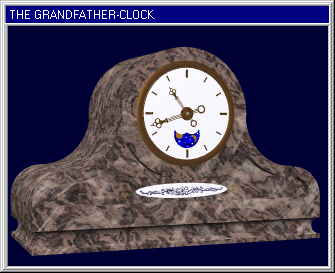

|
|
|---|
|
The Tube
· The object we are goint to draw now is »the tube«. Change to the »left«-viewport and choose the cammand »Objects« | »Tube«. You will notice, that POVLAB asks again for the viewport to draw in. So far, there seems to be not too much difference between a tube and - for example - a torus. And indeed, there is absolutely no difference at all (as it concerns the drawing procedure). For the globe, construct a tube with an outer radius of [2.9] and an inner radius of [2.85]. Remember to use the CTRL-, SHIFT- or ALT-keys whilst drawing with the mouse to achieve good precision. · The next step is to copy the first torus including the ring and to rotate them. To do so, choose »selection« | »object« and mark these shapes. After this, check the »selection-flag« in the lower right corner of the screen, which should be »ON« and click on »modify« | »rotate« followed by a click on the marked objects. Now you can rotate the torus and the ring to an angle of [+/- 90°]. The Half-Sphere · Our globe needs something to stand on - so we will introduce another shape, that is derived from a primitive - the half-sphere, which is very easy to use. Clicking on »Objects« | »1/2-sphere will insert this shape into the scene, right at the coordinate-systems center and with the curved side downwards. · Since you can do everything with a half-sphere, that you can do with a regular sphere, we will cut out any further explanations and leave you with the notice, that you can scale, resize and translate the globes socket to any form or shape you like. The rest of the globe · You probably won't believe it, but the globe is already done - at least these parts, that contain new types of objects. The rest is just cylinders, spheres and tori, that you can add at will. When finished modelling, you should rotate the meridians and the equator around angles of ca. [10°-15°]. If you want to examine the complete globe, then click here to download the scene-file (read the file »textures.txt«, to solve problems with different texture-names). |
The Grandfather-Clock
· This clock will feature some more new object-types. But before we come to these, let's have a look at the clock. 
· As we can see, the shape is smooth und nicely curved. Such forms can be achieved in two different ways: A - using regular primitives combined with CSG-operations and B - using new object types such as »1/4 tubes«. Now let's determine the obejcts we need; a little explosion might help here ...
(continued on next page) |
| Chapter B/Page 8 |
|
Mail to webmaster:
support@povlab.org This page was last modified on: 1996-07-29 |
Mail to the author of the POVLAB-Tutorial:
lepschi@source.co.at |